How It's Made
Say Hello to Jason James, VP of Design
We’re excited to announce that seasoned design leader Jason James has joined Instacart as our VP of Design. Jason comes to us from Thumbtack, where he grew the design team six-fold. In his new role, Jason will chart the evolution of our products and brand as the leader of our Product Design and Brand teams, along with our Research team.
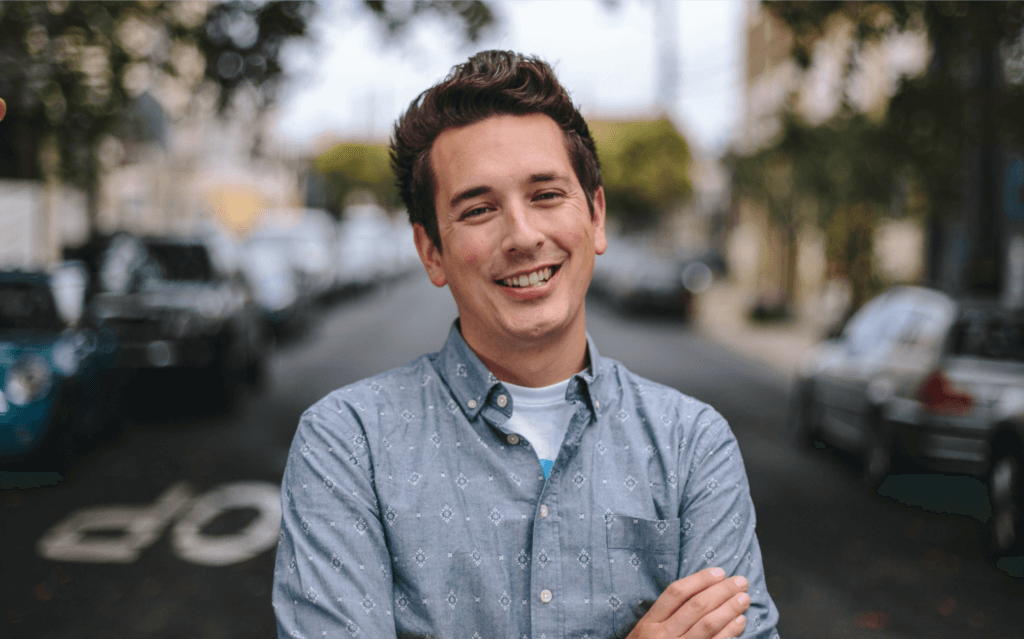
You’ve got a career spanning agencies, B2B tech, and online marketplaces. Can you give us a bit of background on how you evolved from a graphic designer and video producer/editor to where you are today?
I spent the first 10 years of my career in more traditional creative roles — starting in video production straight out of high school and then branching into graphic design shortly thereafter. In those early days, I worked largely on branding, marketing, and advertising projects. By 23, I’d moved into my first management role, taking on the leadership of a 12-person creative team spanning design, video, web, audio, and motion. I describe the story of why I got into management in my article, 5 Myths About Design Management. The TL;DR is that I wanted to help people and getting more hands-on about defining processes and optimizing workflows was the best way to help my colleagues.
I learned a lot the hard way by managing people more experienced than me, older, and in fields I had no firsthand experience in. My main aim then and now is to lead with humility and authenticity — trying to align what I’m good at, what the business needs, and what will make the working lives of my team members better.
For the last 8 years, I’ve shifted the balance of my attention to product design. Brand continues to be a significant part of my responsibilities, but predominantly I’ve been focused on creating beloved products. This evolution started in my hometown of Chicago — working with early stage startups like Kin and DoneDone. Around 2014, I started to think about new opportunities and joined Intercom — sharing time in Chicago, San Francisco, and Dublin. Six years ago, I moved to Oakland and took my first onsite Bay Area role leading product design, brand design, and research at Earnest, an online lender. In my time at Earnest, we grew the business from less than $1M to more than $1B in loans, grew the company from 12 to 200 employees, and the design team from 2 to 12. It was at Earnest that I first discovered my love of recruiting and the value of great product management partners.
My most recent role was VP of Design at Thumbtack, a marketplace for hiring local professionals. Over the course of my 3.5 years there, the company grew from about 450 people to 800 and the design team from 10 to 65. This role, more than the others, grew my analytical thinking, product strategy chops, and tested my people management abilities at scale — leading teams as large as 100 in certain moments.
How were you first introduced to Instacart? Are you a regular user?
Turns out, I was probably one of Instacart’s first customers. In 2013, I was still living in Chicago. I heard about a service called Instacart that would save me the trip to the grocery store during rush hour, so I immediately tried it out and was hooked. It wasn’t until a few weeks ago, when Apoorva mentioned when Instacart initially launched in Chicago that I realized I was such an early customer.
We’re a four-sided marketplace, connecting customers, retailers, shoppers and brands. What drew you to working on another online marketplace?
The complexity of problems associated with marketplaces are endlessly interesting to me. I have a tendency to get bored easily. With a marketplace, one often finds that a solution for one side has unintended consequences for another side. I was interested in Economics in college but didn’t want to pursue a career in it. Working on marketplaces scratches that itch for me.
Additionally, with a four-sided marketplace like Instacart, it’s a chance to basically design four different products and get to know four different user groups. That breadth is far more appealing to me than designing one app for one type of user.
What brought you to Instacart?
The primary considerations for me were: Growth, design opportunity, and the leadership team.
On growth: There’s a relationship between business growth, team growth, and personal growth. I find I’m at my happiest and enjoying my job most when a company is healthy and growing. We get to add people to the team that I get excited about. The current team has ever-expanding opportunities and scope. And everyone is focused on the impact they can have and the massive opportunity in front of them.
On design opportunity: I see Instacart’s consumer app and shopper apps as products that work in a very utilitarian and transactional way. That’s a great starting point, but a far cry from how easy to use, memorable, or delightful they could be. On the brand side, it’s also motivating to me that Instacart is a marquee brand that still needs a lot of brand work. There are very few companies at Instacart’s scale with so much brand work still left to do. I’m excited about the impact our Design team can have.
On the leadership team: In general, I’m looking for collaborators that are intelligent, driven, and humble. Ideally, we’re very philosophically aligned about how to build products and brands. I got more excited about the prospect of joining Instacart the more time I spent with key leaders on the team. That was a big positive signal for me.
What makes an innovative product design?
I prioritize clarity above all. For me, innovation principally comes at a product level rather than UX/UI — is this product a novel service that should exist within the world? Does this unlock new capabilities for people through technology? When it comes to UX/UI, I value well-trodden patterns that people understand how to use – it should be extremely straightforward, highly usable and clear. On top of the simple usability, if you can layer some amount of a little bit of personality — a small brand moment that doesn’t distract — that’s something that design can turn into a richer experience.
What qualities do you look for in a product designer, brand designer, or researcher?
Openness. Rather than hiding away for weeks on end, I see the best designers and researchers work with a sense of openness and transparency about their work. Gathering feedback each step of the way. This allows them to get to the right solutions more quickly.
Resilience. Growth-stage companies are always evolving. Folks that can roll with the changes and find ways to unblock themselves whenever they start to feel blocked will thrive.
Critical thinking. I’m more interested in managing inputs, rather than outputs. Inputs such as: Are we asking the right questions? Did the designer or researcher consider multiple options before narrowing in on the one they chose? And what’s the rationale for selecting that approach? If I can be confident in their approach, then I can trust the outcome is likely to be positive.
For a more in-depth answer see a prior article I’ve written: What Makes A Great Product Designer?
You’ve just started — it’s your first week. What do you plan to tackle first?
Hiring. Relative to the Engineering team of hundreds our CTO has assembled, our Design team is quite small. We need significantly more Product Designers and Design Managers to bring what the Engineering and Product teams are building to life.
Secondarily, I’ll be building context and empathy for the challenges our customers and shoppers face when using our product. I love to start from a foundation of really knowing who we serve and their needs. It ensures the actions we take as a Design team will deliver real value to them.
What’s always in your cart?
Cold brew. So much cold brew. I love Blue Bottle, but I’ve been trying every brand of cold brew I can get my hands on. Turns out, they’re all fine and I’m not much of a coffee snob — just an eager coffee drinker.
Want to design products, build out our research practice, and grow our brand with Jason? Instacart Design is hiring! Check out our current openings.
Learn more about Design at Instacart on our Design blog.
Most Recent in How It's Made
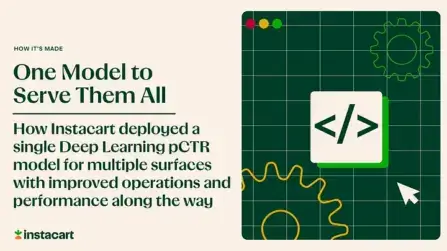
How It's Made
One Model to Serve Them All: How Instacart deployed a single Deep Learning pCTR model for multiple surfaces with improved operations and performance along the way
Authors: Cheng Jia, Peng Qi, Joseph Haraldson, Adway Dhillon, Qiao Jiang, Sharath Rao Introduction Instacart Ads and Ranking Models At Instacart Ads, our focus lies in delivering the utmost relevance in advertisements to our customers, facilitating novel product discovery and enhancing…
Dec 19, 2023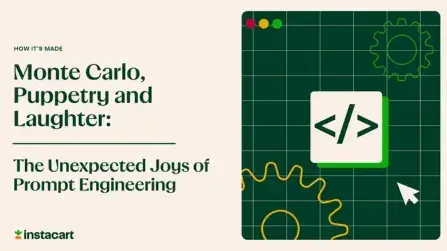
How It's Made
Monte Carlo, Puppetry and Laughter: The Unexpected Joys of Prompt Engineering
Author: Ben Bader The universe of the current Large Language Models (LLMs) engineering is electrifying, to say the least. The industry has been on fire with change since the launch of ChatGPT in November of…
Dec 19, 2023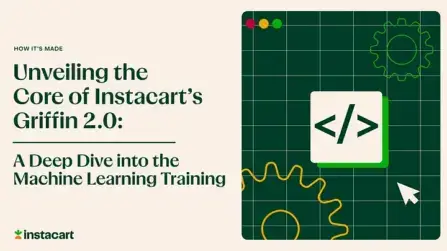
How It's Made
Unveiling the Core of Instacart’s Griffin 2.0: A Deep Dive into the Machine Learning Training Platform
Authors: Han Li, Sahil Khanna, Jocelyn De La Rosa, Moping Dou, Sharad Gupta, Chenyang Yu and Rajpal Paryani Background About a year ago, we introduced the first version of Griffin, Instacart’s first ML Platform, detailing its development and support for end-to-end ML in…
Nov 22, 2023
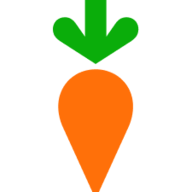
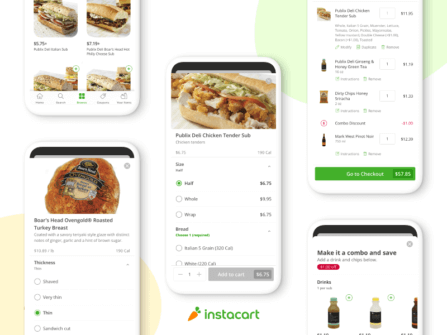 Building Instacart Meals
Building Instacart Meals 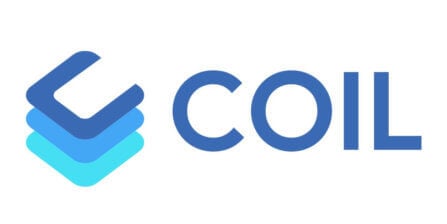 Introducing Coil: Kotlin-first Image Loading on Android
Introducing Coil: Kotlin-first Image Loading on Android 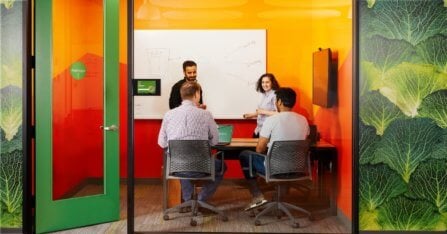 7 steps to get started with large-scale labeling
7 steps to get started with large-scale labeling 
